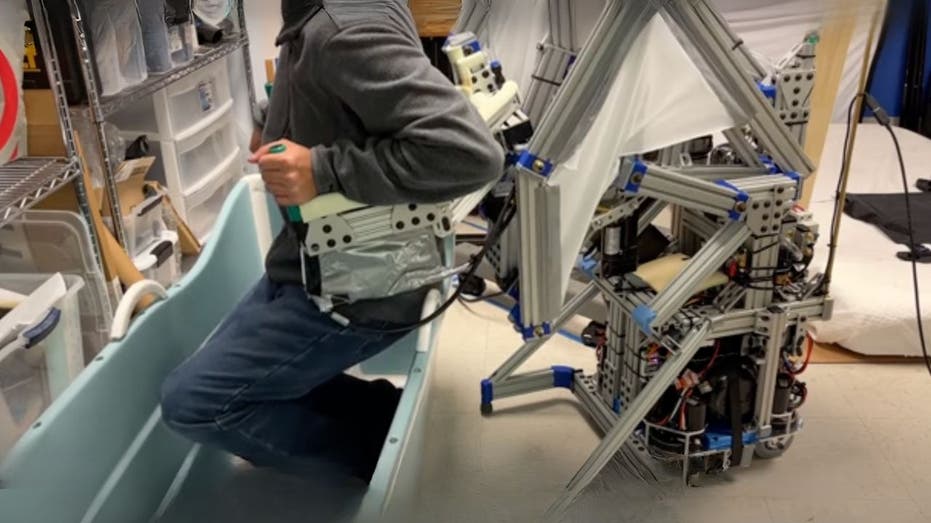Innovative Mobile Robot Enhances Senior Safety by Preventing Falls and Assisting with Walking
MIT's E-BAR robot offers mobile, supportive handlebars to help seniors stay safe and maintain independence.

The United States is in the midst of a profound demographic transformation, as the nation's median age climbs to 38.9 years—almost ten years older than it was just four decades ago. This shift is reshaping both social and economic landscapes, with projections indicating that by 2050, more than 82 million Americans will be over the age of 65, up from the current 58 million. Such growth in the senior population brings significant challenges, especially in the realm of eldercare. Among these, fall prevention remains one of the most pressing concerns for older adults, prompting innovators to develop new technologies for safer living.
Addressing this urgent need, engineers at MIT have developed the E-BAR (Elderly Bodily Assistance Robot), a state-of-the-art mobile robot designed to assist seniors and mitigate the risk of falls within their homes. Unlike many traditional support devices such as harnesses or wearables—which can feel intrusive or uncomfortable—E-BAR takes the form of a set of robotic handlebars that follow the user from behind. Seniors can choose to walk freely, lean for balance, or rely on full-body support during challenging transitions like standing up or sitting down. The robot’s articulated structure, made from 18 bars interconnected to mimic human movement, allows for smooth, natural motion and a user-friendly interface.
What truly distinguishes E-BAR is the thoughtful marriage of engineering and empathy. Its 220-pound base ensures stability, supporting an adult’s weight without tipping or sliding, while omnidirectional wheels grant it exceptional maneuverability even in tight residential spaces. These features allow the robot to move seamlessly alongside the user, whether they're navigating furniture, reaching for items, or stepping out of the shower—routine actions that often pose fall risks for seniors.
A major innovation comes in E-BAR's integrated fall-prevention system. Each supporting arm is equipped with inflatable airbags crafted from soft, easily grippable materials that deploy instantly if a fall is detected. This rapid-cushioning system protects users without requiring any special clothing or harness, offering dignified support in a moment of crisis. In controlled tests, E-BAR has been able to catch and stabilize elderly volunteers performing daily tasks, effectively minimizing the potential for injury.
Presently, E-BAR is operated by remote control, but the development team is actively working toward autonomous navigation and real-time adaptive assistance via machine learning. Their aim is to create a robot that not only follows its user but also intelligently gauges fall risk and adapts its support dynamically as needs evolve—a vision that could be life-changing for millions of older adults seeking to retain their independence.
Senior citizens and caregivers have expressed a clear preference for unobtrusive and non-restrictive solutions. E-BAR's ergonomic U-shaped handlebars are open in front, so users can walk with a natural gait and exit the device whenever they choose. Its slim profile fits through standard doorways and is aesthetically designed to feel like just another household appliance—not a medical device—making it more likely to be accepted and used consistently in the home environment.
Researchers see E-BAR as part of a larger push to develop an entire ecosystem of robotics and smart technologies aimed at every level of mobility among seniors. While some devices focus on predicting and alerting to falls, and others use harnesses for support, E-BAR stands out by combining real-time fall prevention, intuitive full-body support, and flexible, user-driven autonomy. It fills a crucial gap for seniors who wish to stay active and engaged without the stigma or inconvenience of traditional aids.
Although E-BAR is still in the prototype phase and unavailable to the public, the MIT team continues to refine both design and functionality, expecting it could take between five to ten years for regulatory approvals and commercial readiness. Future improvements are already underway: designers plan to make the device slimmer, easier to maneuver, and further enhance its intelligent features, ensuring it remains responsive to the changing needs of aging users.
Ultimately, what makes E-BAR remarkable is its human-centered approach. Rather than focusing solely on technical capabilities, the project prioritizes comfort, dignity, and ease of use, reflecting direct feedback from the very people it aims to serve. As society ages, innovations like E-BAR stand to redefine eldercare, empowering seniors to live safely, independently, and with confidence in the places they call home.




